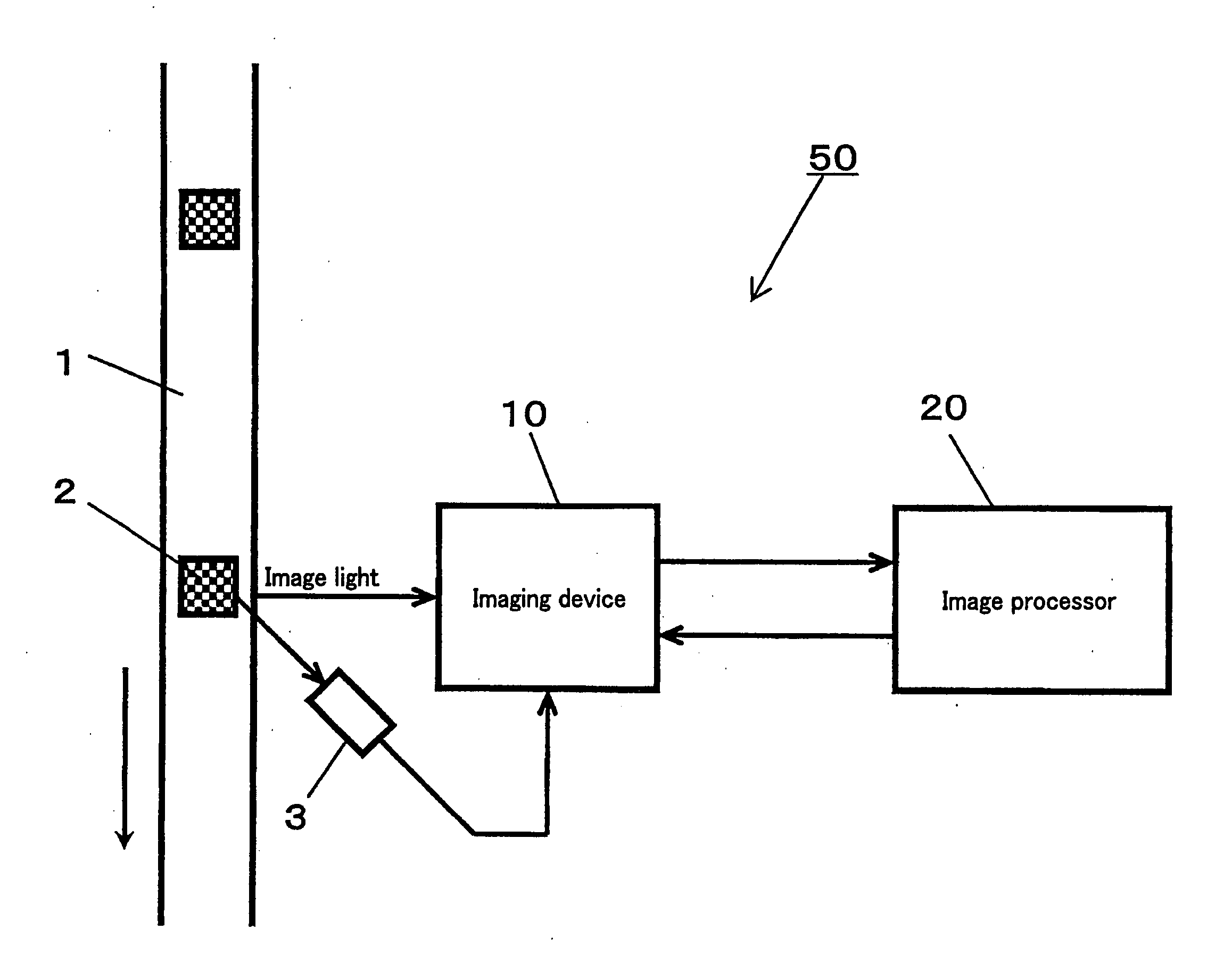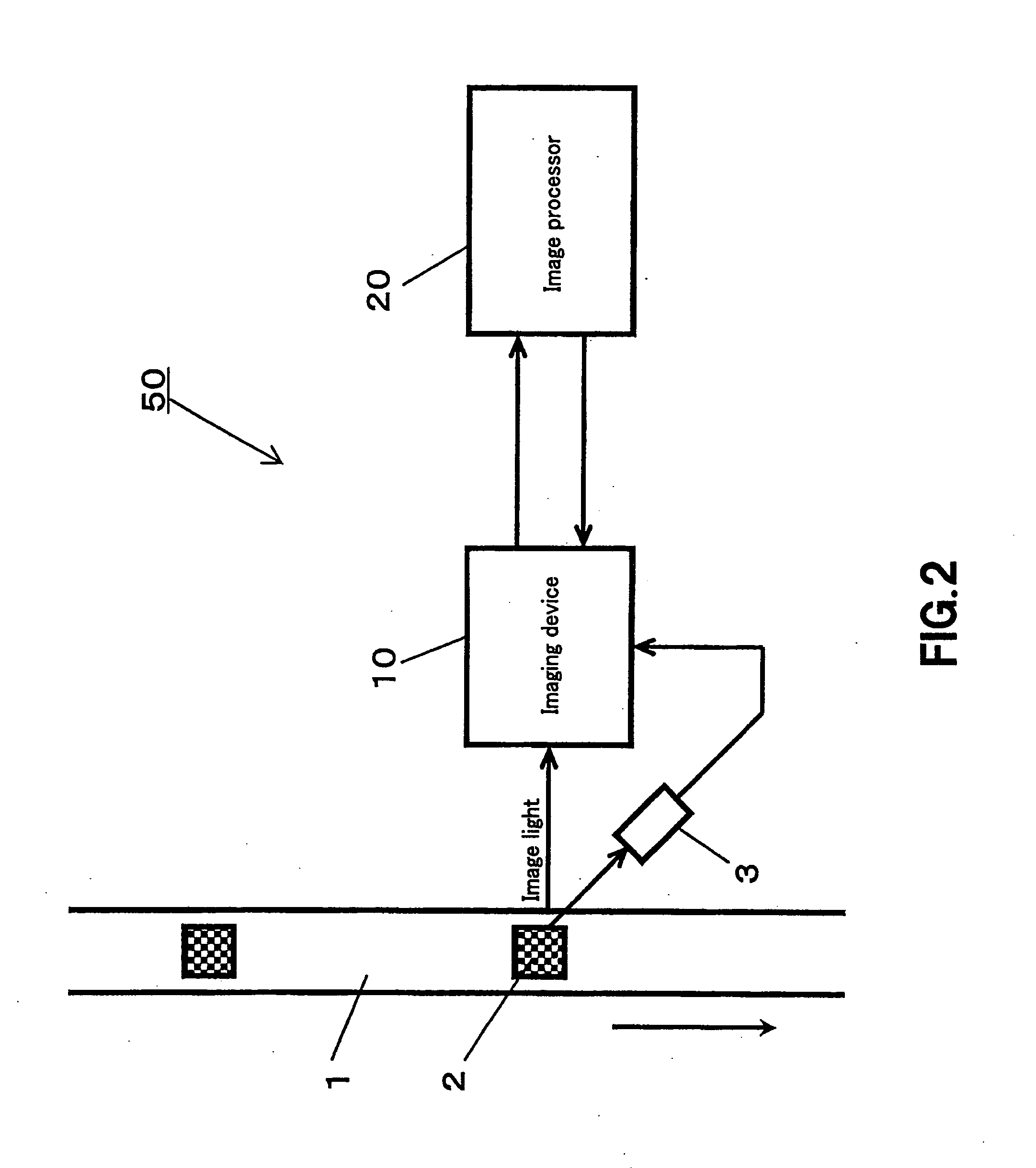Imaging device and method, and imaging controlling apparatus and method
- Summary
- Abstract
- Description
- Claims
- Application Information
AI Technical Summary
Benefits of technology
Problems solved by technology
Method used
Image
Examples
Embodiment Construction
[0030] The present invention will be described in detail below concerning an embodiment thereof with reference to the accompanying drawings.
[0031] The present invention is applied to an imaging system, generally indicated with a reference numeral 50, constructed as schematically shown in FIG. 2.
[0032] In the imaging system 50, an object 2 being carried on a transfer path 1 such as a belt conveyor or the like is detected by an object sensor 3, it is imaged by an imaging device 10 on the basis of a detection output from the object sensor 3, and the captured image is taken in as a still picture. The image data captured by the imaging device 10 by imaging the object 2 on the basis of the detection output from the object sensor 3 is supplied to an image processor 20 also included in the imaging system 50.
[0033] In the imaging system 50, the object sensor 3 detects the object 2 being carried on the transfer path 1, a trigger signal TRIG is generated when the object 2 arrives at the fro...
PUM
 Login to View More
Login to View More Abstract
Description
Claims
Application Information
 Login to View More
Login to View More - R&D
- Intellectual Property
- Life Sciences
- Materials
- Tech Scout
- Unparalleled Data Quality
- Higher Quality Content
- 60% Fewer Hallucinations
Browse by: Latest US Patents, China's latest patents, Technical Efficacy Thesaurus, Application Domain, Technology Topic, Popular Technical Reports.
© 2025 PatSnap. All rights reserved.Legal|Privacy policy|Modern Slavery Act Transparency Statement|Sitemap|About US| Contact US: help@patsnap.com



